5 Flag Components to Make Your Flags More Wind Resistant
It’s an age-old question. . . how does one extend the life of their flag when wind, the very thing that makes flags fly so beautifully, is also the...
2 min read
Accent Banner : Jun 12, 2020 9:18:14 AM
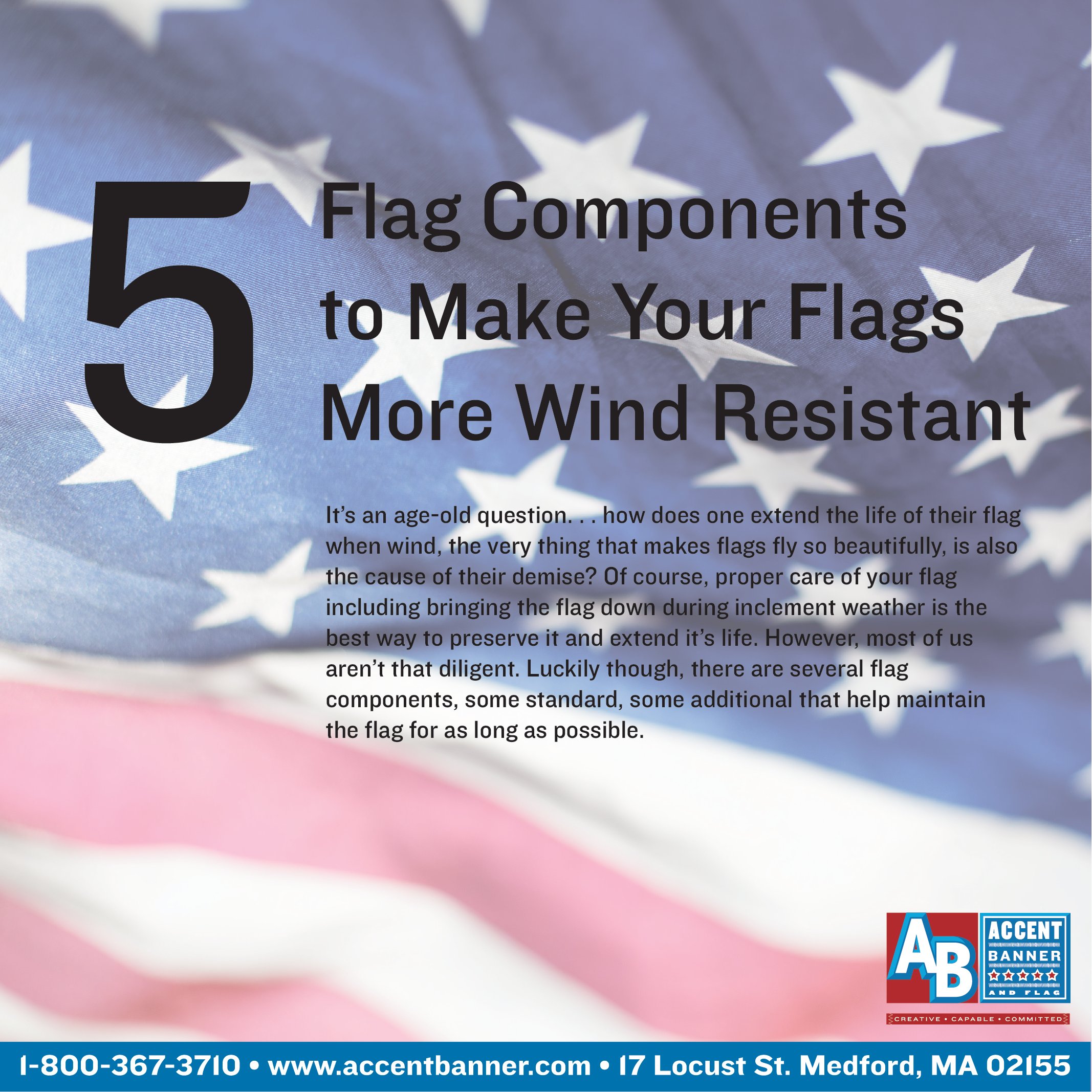
It’s an age-old question. . . how does one extend the life of their flag when wind, the very thing that makes flags fly so beautifully, is also the cause of their demise? Of course, proper care of your flag including bringing the flag down during inclement weather is the best way to preserve it and extend it’s life. However, most of us aren’t that diligent. Luckily though, there are several flag components, some standard, some additional that help maintain the flag for as long as possible.
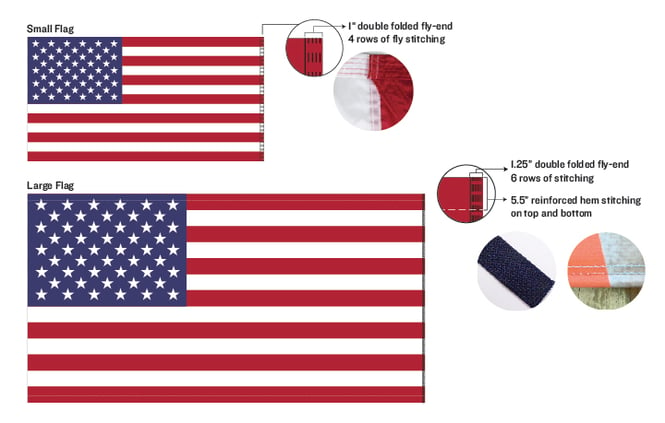
The first, and most common flag component is a reinforced fly-end or the vertical edge of the flag; in the case of the US flag this is the end furthest from the star field. The most basic version of a reinforced fly-end includes a 1” double fold of the flag material and four rows of fly stitching. Larger flags require even more reinforcement including a 1.25” double folded fly-end with 6 rows of fly stitching and 5.5” reinforced hem stitching on the top and bottom.

The second component comes in two versions. The first is a header with grommets. Headers are made with a heavy-duty, white cotton-polyester blend duck cloth. All grommets are solid brass. Grommets are spaced evenly throughout the length of the header. Small flags like 12" x 18" often have smaller diameter #1 size grommets, and 16" x 24" and larger flags have #2 grommets.
Accent Banner prefers to use spurred grommets which provide a better hold than the plain (non-spurred) grommets commonly found in other manufacturer’s products.
The second version is a rope and header. Flags that are 8' x 12' and larger include plated steel rope thimbles. Thimbles are attached to white rope using a triple crimped rope sleeve. The length of the rope is sewn into the header to maintain its position and prevent bunching.
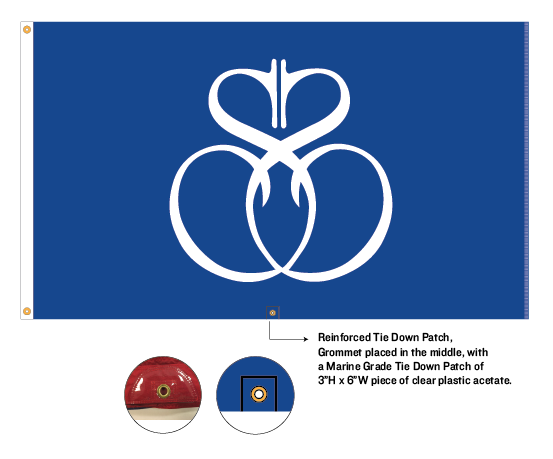
Thirdly, is the tie down patch. These too come in a few options. Most popular is the reinforced tie-down patch in which multiple layers of nylon matching the field or background color are layered and sewn into the flag’s field. A grommet is then placed in the middle providing a hole to attach rope or a snap-hook. A more durable option is the marine grade tie-down patch which incorporates a 3” x 6” piece of clear plastic acetate. This same material is often used on boats as windows in the rain cover.
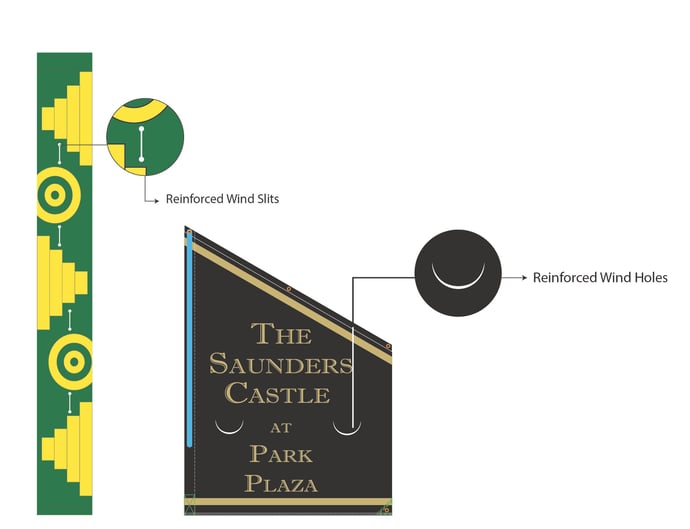
The fourth component is wind holes and wind slits. Wind holes are crescent shaped holes cut into the flag’s field and wind slits are reinforced slices cut into the field. Both are intended to release air pressure as wind blows through the flag. Placing these components can be tricky especially in the case of custom flags as it is important to place them well to allow air flow but not interfere with the flag’s logo or design.
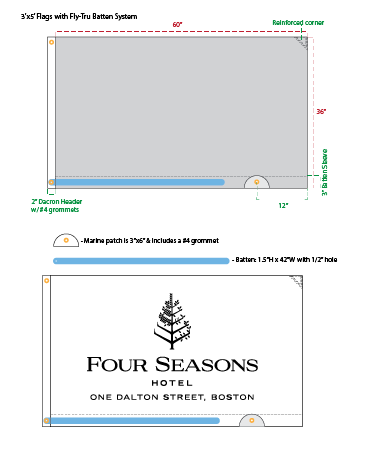
Lastly, is Accent Banner’s own Fly-Tru Batten System. Simply put, this System is a collection of components including a tie-down patch, reinforced header, are reinforced fly-end and most importantly a reinforced sleeve that houses a flexible yet durable fiberglass batten. The fiberglass batten is hidden inside of the flag’s sleeve and attached to the halyard with the use of a pin and shackle. This system helps prevent the flag from wrapping around the flagpole. It is also a much safer option than its predecessor the metal non-tangle rod. All too many times metal non-tangle rods have come loose from their flag and come careening down to potentially cause damage to whatever may be below. The Fly-Tru Batten System however uses a lightweight fiberglass batten often found in use on sailboats. If by some reason it were to come loose from the flag sleeve it would do far less damage, if any at all.

It’s an age-old question. . . how does one extend the life of their flag when wind, the very thing that makes flags fly so beautifully, is also the...

Flag Engineered for Space: Earth

The three benefits of applique flags are: